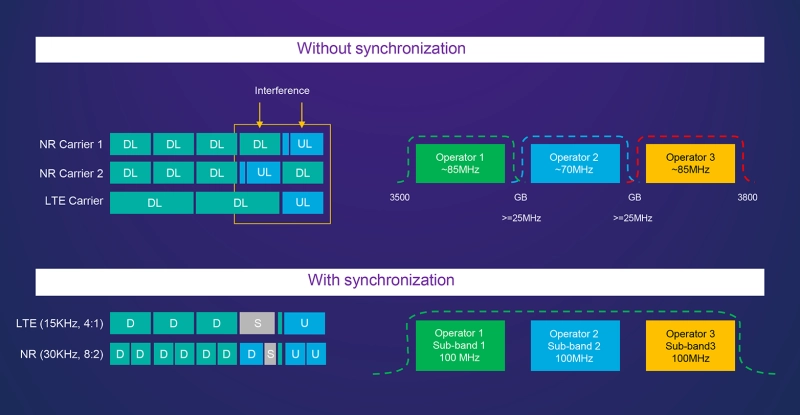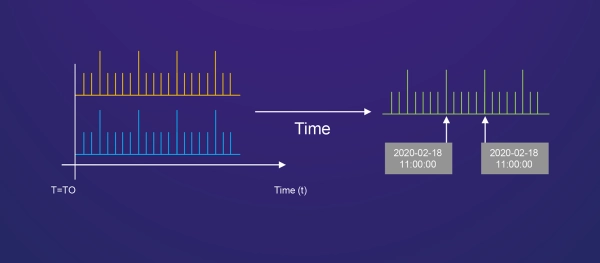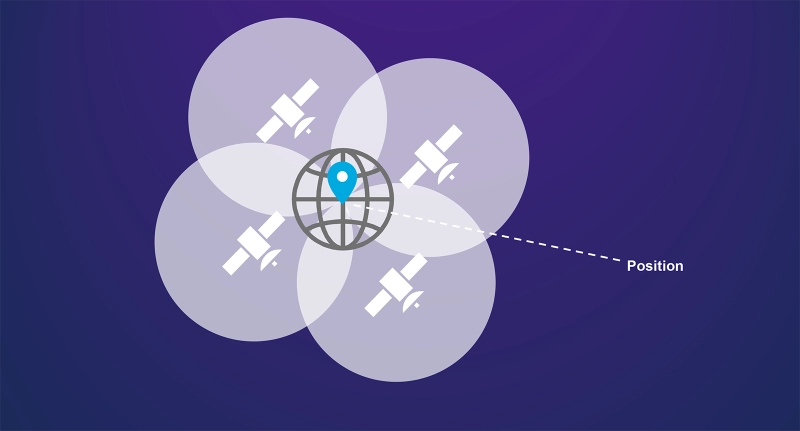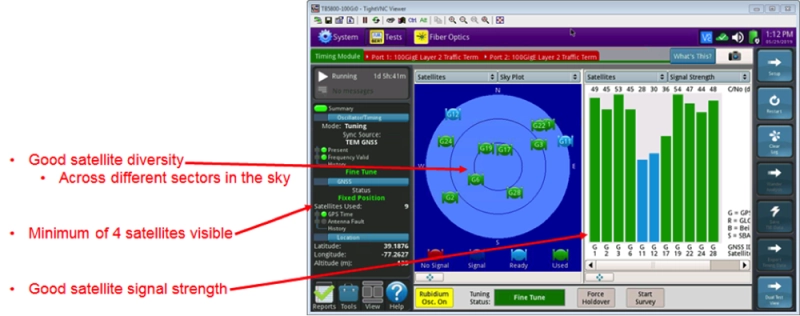What is 5G Timing and Synchronization?
Explore this helpful resource about wireless timing and synchronization. Learn more about what it is, its requirements and challenges, and wireless testing solutions."
Timing and synchronization are important and interrelated requirements for 5G wireless network performance. Timing is based on the establishment of a precise, standardized time value that must be communicated throughout the wireless network. The closely related concept of synchronization refers to the coordinated cadence of network activities that can only be completed successfully with this common time reference.
The precise timing and synchronization requirements for 5G networks are being driven by much faster speeds, lower latency, and increased cell site densification. Timing and synchronization standards for wireless networks prevent messages from interfering with one another and enable smooth cell-to-cell transfers. The shift to packet-based transport and time division duplex (TDD) technologies also requires precision and versatility from timing and synchronization test solutions.
The Importance of Timing and Synchronization
Timing based on global network satellite system (GNSS) constellations, including the global positioning system (GPS) timing source servicing the U.S., plays an important role in wireless network operation. Without access to this consistent and accurate time standard, efficient spectrum utilization and the delivery of high-speed, high-bandwidth wireless services would not be possible.
- Synchronization Technology is essential for all wireless communication, including 5G networks. Duplexing, multiplexing, and packet-based strategies all rely heavily on timing references to coordinate data transmission, prevent interference, reduce error rates, and compensate for any frequency or phase shifts.
- Frequency Synchronization describes a state in which the frequencies (repeating intervals) of different system clocks are aligned, but the phase and time are not.
- Phase Synchronization means clocks are aligned with respect to frequency as well as phase but lack a common time origin.
- Time Synchronization refers to a state where both phase and frequency synchronization are in place and the clocks also have a common time origin, such as Coordinated Universal Time (UTC).
- 5G RAN Disaggregation has divided Baseband Units (BBUs) into flexible centralized units (CUs) and distributed units (DUs). Tightly controlled absolute and relative timing between these elements is needed to meet 5G use case requirements. Synchronization of the fronthaul network allows the RAN to function properly, regardless of the distance between CU and DU.
Duplex telecommunication means two-way transmission over a communication channel. Time Division Duplex (TDD) accomplishes this using different time slots for uplink and downlink signals over the same frequency. This ingenious method enables full-duplex (simultaneous) communication over a half-duplex (serial-binary) link.
- Time Division Duplex Wireless is a fundamental technology for 5G deployments around the world. Spectral efficiency is improved when uplink and downlink signals operate over the same frequency with only a brief guard period between transmissions. Duplex communication links require precise timing and synchronization to prevent intra-cell or inter-cell interference. TDD requires both phase and frequency synchronization.
- TDD Slot Format for 5G breaks data into a series of 10ms radio frames, each containing ten 1ms sub-frames. The 56 available frame and slot configurations contained in release 15.3 of 3GPP TS 38.213 accommodate a wide range of 5G use cases and traffic patterns.
- Variation in 5G TDD time slots can lead to cross-link interference. Some formats have equal uplink and downlink times while others are less balanced. To prevent interference, frame and slot structures must also be synchronized between adjacent networks.
- Frequency Division Duplex (FDD) is a full-duplex telecommunication method that predated TDD and requires separate transmit and receive frequency bands. Any discussion of 5G FDD and TDD usually includes the larger portion of spectrum consumed by FDD technology.
- Guard banding is required between FDD transmit and receive channels to minimize interference. Although FDD is more forgiving with respect to timing and synchronization requirements, compatibility with MIMO, beamforming, and the C-Band spectrum are additional factors favoring TDD vs FDD 5G.
The Precision Time Protocol (PTP) defined by the IEEE 1588 standard establishes a method for precise clock synchronization to the sub-micron range for packet-based networks. This includes Ethernet based 5G mid-haul and fronthaul networks. PTP Version 2 (1588v2), released in 2008, and an additional backward-compatible revision completed in 2019 improved the accuracy, precision, and clarity of this protocol.
- Precision Time Protocol PTP Infrastructure includes a primary clock directly synced to a GNSS satellite source. Absolute time is based on UTC. This information is shared throughout the network using boundary clocks and secondary clocks. The secondary clocks do not act as timing sources for other clocks. When all radio units in 5G networks are synchronized to a common time and phase, the scheduler can minimize interference.
- A Boundary Block used for the PTP can act as both a primary and secondary clock. Once it receives a timing message from the original primary clock, it can adjust for delay and send a new primary time signal to other clocks in the network.
- PTP Over Ethernet is replacing GNSS as the primary timing source for the 5G fronthaul network. Although Ethernet is not automatically synchronous, timing and frequency information can be distributed over an Ethernet layer using PTP and Synchronous Ethernet (SyncE).
When 5G network nodes are out of sync, received signals cannot be demodulated properly. This can lead to high bit error rate (BER), delay, and jitter that compromise the customer experience. To address this, synchronization requirements have been established by multiple standards bodies, including the 3GPP and ITU-T
- Synchronization definition and procedures vary, depending on the communication system. Carrier and timing accuracy requirements are more stringent for TDD vs FDD 5G. For each use case, the synchronization type, requirements, and impact of non-compliance on performance also varies.
- Time Error (TE) is the time difference between any two nodal clocks. Absolute time error between a primary time reference and any node is limited to just 1.5μs for LTE/5G TDD. This includes 1.1μs of absolute time error in the backhaul plus 0.4μs for the remainder of the link from the backhaul output to the radio antenna port.
| Use Case | Sync Type | Synchronization Requirement | Need for Compliance | Impact of Non-compliance |
|---|---|---|---|---|
| LTE/5G-NR FDD |
Freq |
50 PPB Absolute | Accessibility and Retainability | Interference and high drop connections |
| LTE/5G-NR FDD | Time | ~10 µs Absolute | Time slot Alignment | Packet Loss collision, Performance degradation |
| LTE/5G-NR/eMBMS/Carrier Aggregation | Time | ~3-5 µs Absolute | Time Alignment between multiple carriers and cells for video decoding and a Carrier Aggregation | Poor video quality and CA failure, Low throughput |
| LTE/5G-NR TDD/eCIC | Time | ~1-5 µs Absolute | Interference Management/Interference Co-ordination | Network Interference, Reduced capacity, Poor performance |
| LTE/5G-NR CoMP/LBS | Time | <1 µs relative OTA measurement | Coordination of signals to/from cell sites | LBS Accuracy, spectral efficiency |
| LTE/5G-NR TDD | Frame | Depends on the Adjacent TDD network (LTE vs. 5G) | Coordination with Adjacent LTE or 5G Network | Network Interference, Reduced capacity, Poor performance |
The Challenges of 5G Timing and Synchronization
RAN disaggregation, TDD, and the adoption of MIMO, beamforming, and millimeter wave technology have enabled the full potential of 5G wireless to be realized. These innovations have also combined to drive timing and synchronization requirements for 5G to unprecedented levels. Real-time applications like autonomous vehicles and the IoT are changing the equation for the timing and synchronization aspects in packet networks.
-
Inter-Cell Interference can be an unwanted byproduct of 5G time division duplex wireless. A compatible frame structure between collocated networks with adjacent frequency assignments must be established.
-
Carriers using TDD must have a guard period between uplink and downlink transmissions. DL signal can potentially leak into adjacent channels using TDD and FDD LTE guard banding is no longer in place to lessen the impact.
-
GNSS Signal Quality acquired by the satellite antenna must be highly reliable to meet the requirements of 5G. GNSS signal strength verification from multiple locations and full antenna validation can minimize potential interference issues.
-
Precise Timing and Synchronization requirements of 5G cell sites have made even small-time variations unacceptable. While 3G and 4G networks only needed one satellite line of site for synchronization, 5G networks require a lock on 4 or more satellite positions to minimize the impact of satellite location.
What Can We Test?
Fortunately, ultra-demanding timing and synchronization requirements can be accurately and reliably verified, using the powerful suite of VIAVI test solutions. Problematic frame drops, interference, and handover issues can be prevented through a proactive validation approach.
-
PTP Testing ensures all network clocks are properly aligned with the primary and PTP frequency profile limits such as floor packet percentile are met. Time and phase profile conformance to time error (TE) limits can also be established. The VIAVI T-BERD/MTS-5800 and/or OneAdvisor 800 Wireless make it easy to test timing error and connectivity by emulating PTP endpoints downstream from a primary clock.
5G NR Frame Format testing verifies conformance to the agreed-upon slot and frame formats. Over-the-air testing, using the OneAdvisor 800 Wireless, can be used to validate TDD frame format for multiple operators on adjacent networks. Intercell interference caused by time division duplex wireless can be prevented.

- GNSS Testing can also be performed with the T-BERD/MTS-5800 to establish the suitability of the GNSS antenna location during and after installation. The number of visible satellites, their signal strengths, and the diversity of satellite positions across sectors and site lines can all be assessed using a single intuitive interface.
RAN disaggregation, TDD, and the adoption of MIMO, beamforming, and millimeter wave technology have enabled the full potential of 5G wireless to be realized. These innovations have also combined to drive timing and synchronization requirements for 5G to unprecedented levels. Real-time applications like autonomous vehicles and the IoT are changing the equation for the timing and synchronization aspects in packet networks.
-
Inter-Cell Interference can be an unwanted byproduct of 5G time division duplex wireless. A compatible frame structure between collocated networks with adjacent frequency assignments must be established.
-
Carriers using TDD must have a guard period between uplink and downlink transmissions. DL signal can potentially leak into adjacent channels using TDD and FDD LTE guard banding is no longer in place to lessen the impact.
-
GNSS Signal Quality acquired by the satellite antenna must be highly reliable to meet the requirements of 5G. GNSS signal strength verification from multiple locations and full antenna validation can minimize potential interference issues.
-
Precise Timing and Synchronization requirements of 5G cell sites have made even small-time variations unacceptable. While 3G and 4G networks only needed one satellite line of site for synchronization, 5G networks require a lock on 4 or more satellite positions to minimize the impact of satellite location.

GPS based synchronization



